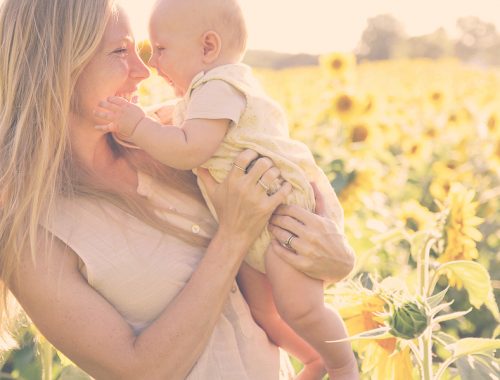There is a lot going around on the news about the worldwide “outbreak” of a new influenza A virus known officially as H1N1 and colloquially as the “swine flu.” Even here in BC, the news is reporting that there are outbreaks occurring at some private schools. With all this information, it can be difficult to separate rumour from fact. The following is summarized from the World Health Organization(WHO) website.
The WHO is the UN’s agency on international public health. They describe and prescribe information and measures for the international community for any global health issue.
H1N1 Transmission:
Transfer of the virus from one individual to another occurs in a similar manner to the regular seasonal flu. The WHO states that transmission is through “droplets expelled by speaking, sneezing or coughing.”
H1N1 Infection Prevention:
The following infection prevention measures are taken directly from the WHO website.
- Avoid close contact with people who show influenza-like symptoms (try to maintain a distance of about 1 metre if possible)
- Avoid touching your mouth and nose (where the virus can leave and enter your body)
- Clean hands thoroughly with soap and water, or cleanse them with an alcohol-based hand rub on a regular basis (especially if touching the mouth and nose, or surfaces that are potentially contaminated)
- Reduce the time spent in crowded settings if possible (such as public transit and other public places)
- Improve airflow in your living space by opening windows
- Practice good health habits including adequate sleep, eating nutritious food, and keeping physically active
What’s the best way to wash your and your child’s hands?
The WHO reports that we should all clean our hands regularly, with soap and water and dry them thoroughly. When you do not have access to soap and water, use an alcohol-based hand rub. The following is a description of the best hand washing practice. You can teach it to your child and perhaps frame it as a “hand dance” to the tune of “Happy Birthday.”
The WHO reports that the best way to wash your hands is as follows (for a diagram, visit the WHO website):
- The entire washing of hands process should last as long as singing “Happy Birthday” two times.
- Wet your hands with water.
- Apply enough soap to cover the entire surface area of your hands.
- Rub hands palm to palm.
- Rub hands palm to palm with fingers interlaced and then again palm to back of hand with fingers interlaced.
- With fingers interlocked, rub the backs of your fingers to the opposing palms.
- Clasp your left thumb in your right palm and rub in a circular fashion. Repeat with right thumb in left palm.
- Rub your fingers into the palm of your other hand in a circular manner.
- Rinse thoroughly.
- Dry thoroughly with a single use towel.
- Use a towel to turn off the faucet.
What about masks?
The WHO states that masks are not necessary for individuals who are not sick. If you are in close contact with an ill individual, you can wear a mask. Make sure to throw it out after your contact with the sick individual ends and to wash your hands thoroughly.
If you are sick, cover your mouth and nose whenever you are in contact with others. If you do not have a mask, remember to cough into the crook of your elbow and not your hand and make sure children do the same. If you cough into your hand, the virus will transfer to your hand and then transfer to anything you touch. Wash your hands frequently regardless. If you do use a mask, be sure to follow the instructions for proper usage carefully or the mask will be rendered useless. For complete recommendations on the use of masks, visit the WHO document on advise for the use of masks.
What about antivirals?
The WHO does not recommend taking antivirals as a preventative measure unless your doctor advises you to do so. They advise against taking preventative medications without a prescription and advise caution when purchasing antivirals over the Internet.
Should you stop breastfeeding if you are sick?
The WHO has said not to stop breastfeeding unless your healthcare provider advises you to do so. They report that studies on other flu viruses have shown that breastfeeding is actually a protective act for babies. According to the WHO, breast milk “passes on helpful maternal immunities and lowers the risk of respiratory disease.” It also “provides the best overall nutrition and increases [the baby’s] defense factors to fight illness.”
How do you know if you or your child is infected with H1N1?
Only medical professionals can determine whether your illness is H1N1 or the normal, seasonal flu. The WHO reports that the symptoms are the same as the seasonal flu symptoms and include fever, cough, headache, body aches, sore throat and a runny nose. In other words, there is no distinguishing feature that separates H1N1 from other common viruses.
What should you do if you think you may have H1N1?
Again, the following is taken directly from the WHO website.
If you feel unwell, have a high fever, cough or sore throat:
- Stay at home and keep away from work, school or crowds
- Rest and take plenty of fluids
- Cover your nose and mouth when coughing and sneezing and, if using tissues, make sure you dispose of them carefully. Clean your hands immediately after with soap and water or cleanse them with an alcohol-based hand-rub
- If you do not have a tissue close by when you cough or sneeze, cover your mouth as much as possible with the crook of your elbow
- Use a mask to help you contain the spread of droplets when you are around others, but be sure to do so correctly
- Inform family and friends about your illness and try to avoid contact with other people
- If possible, contact a health professional before traveling to a health facility to discuss whether a medical examination is necessary
When should you seek medical care for yourself or your child?
The WHO reports that symptoms requiring professional medical intervention include the following:
For adults:
- Shortness of breath
- Difficulty breathing
- A fever that lasts more than 3 days
For children:
- Fast or laboured breathing
- Continuing fever
- Convulsions or seizures
How should you care for a sick individual?
The WHO states you should “support” them by ensuring they have plenty of rest and fluids to drink. Pain relievers are advisable to relieve pain. Remember to use a non-aspirin-containing pain reliever for children and young adults. These measures should relieve symptoms towards “adequate recovery.”
Should you go to work or travel if you have the flu but are feeling fine?
The WHO recommends that you stay home for the duration of your symptoms to prevent transmission to other individuals. Children should be kept home from school and other activities for the entire duration of their symptoms.
Is it safe to travel?
Yes. For recommendations on traveling, visit the WHO website on the topic.
What about pork? Is it safe to consume pork products?
The WHO reports that yes, pork products are safe to eat. There is no evidence that properly handled pork products transmit the virus. Also, viruses or bacteria of any kind are killed when the pork is cooked to a temperature of 160°F or 70°C.
For more great H1N1 information including info on vaccines, measures taken in schools and the latest news, return to Urbanmommies.com soon for further reports.
-Danica Longair



Hello,
Very nice article. Just thought of letting you and everyone know to carry pocket size of Benefect where ever you go. I got it from http://www.simplynontoxic.com and found it very useful.
By the way the Benefect Disinfectant does kill all kinds of Flu viruses and doesnt need wiping or rinsing. I put one pocket size disinfectant in my kids school bag.
[…] more general information about H1N1 please refer to our other articles H1N1 Influenza: What You Need to Know and H1N1: Severity, Vaccines and More News. For more information about H1N1 and the H1N1 vaccine […]